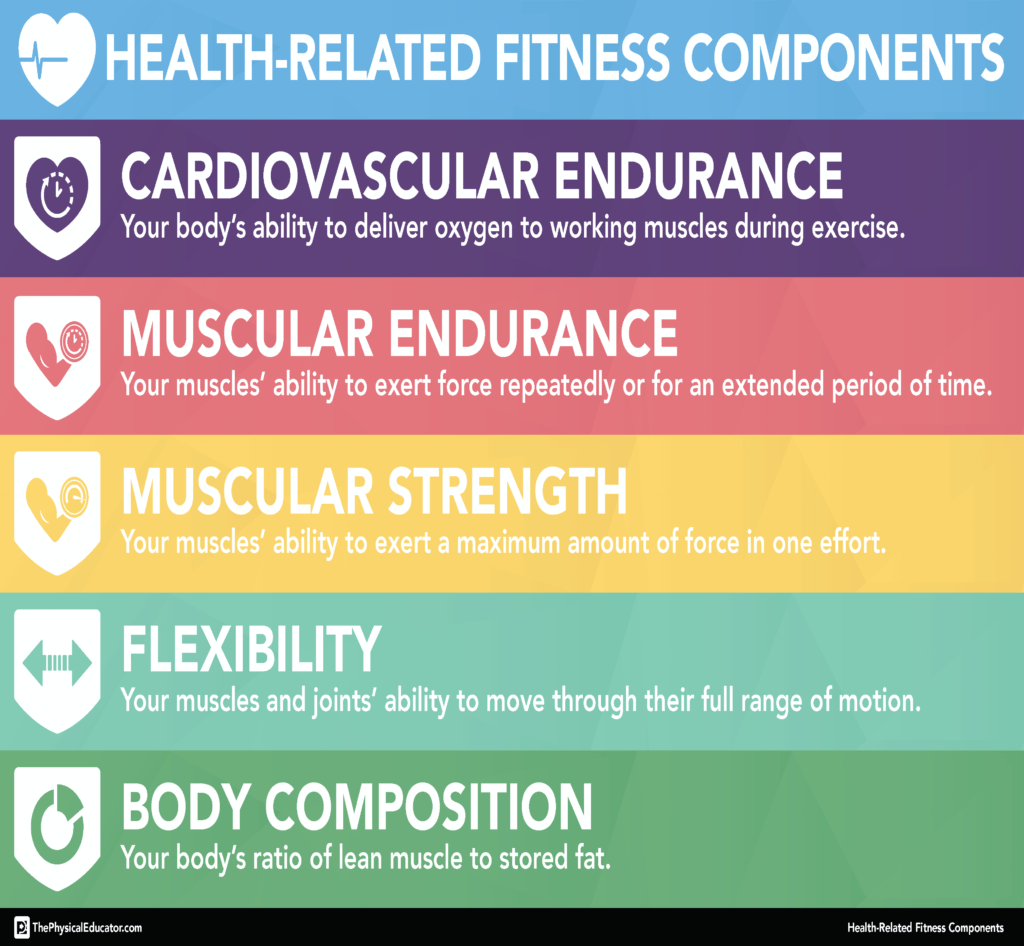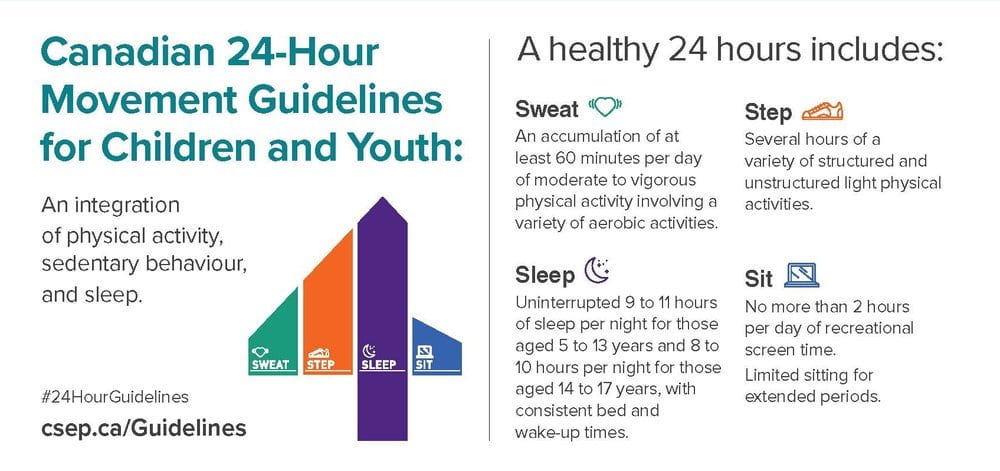Physical activity is defined as any movement produced by our skeletal muscles that requires energy, whereas exercise is a type of physical activity that is planned, structured, and repetitive in order to maintain and/or improve one’s physical fitness (World Health Organization).
So What is Fitness?
Fitness is a widely misunderstood concept where many people see it as our ability to do certain activities such as push ups, crunches, and so on. Rather, our fitness levels look at our ability to meet the many physical challenges and tasks we encounter on a daily basis such as:
- walking up a flight of stairs
- pushing or pulling a door open
- quickly get out of the way of a moving object
- running to catch the bus
- playing sports or go for hikes
- being able to move without getting hurt or injured (not including accidents)
- and more
One’s fitness is kind of like a pizza where the whole ‘thing’ is made up of different parts, such as the pizza dough, sauce, and various toppings. Just like the pizza, our fitness is made up from different parts and each one has its own influences on how we can function in a physical way. Also, just like toppings on a pizza can influence the flavour of it, so too can the different components of our fitness influence the other parts. So what are these different components of our fitness?
To begin, it is important to know that fitness is divided into 2 categories:
- Health Components of Fitness (pdf poster)
- Skill Components of Fitness (pdf poster)
The 5 Health Components of Fitness
(source: ThePhysicalEducator.com)
*NOTE: The ability to gain muscular strength for young children-adolescents is more about increasing the speed of connections between the muscles being used and the brain, and less about increasing the actual strength of the muscle. Therefore, the term ‘muscular fitness‘ is used instead as a combination of the two.
The 6 Skill Components of Fitness
(source: ThePhysicalEducator.com)
How Much Physical Activity Should I Get?
The health guidelines from Health Canada, and many medical professionals across the world, is to get at least 60 minutes of moderate to vigorous (MVPA) levels of activity each day. It does not have to be 60 minutes in one time period; it can be in smaller sessions lasting at least 10 minutes spread throughout the day. Video #4 (below) provides a quick and easy description about the significance of different intensity levels in physical activity.
Click HERE, or on the picture below, for a quick look at the Canadian 24 Hour Movement Guidelines for Children and Youth; the first of its kind in the world.
(Source: www.csep.ca/en/guidelines/24–hour-movement-guidelines)
Physical Activity Videos
1. Participation in Physical Activity for the Brain and Body (2:37)
2. Increasing Your Productivity (2:57)
3. Morning exercise & activity for better mental well-being (2:12)
4. 30 Minutes a Day: One of the Best Things You Can Do for Your Health (9:18)
5. The Importance of Intensity in Physical Activity (3:27)
6. 5 components of fitness
7. 6 skill related components of fitness


